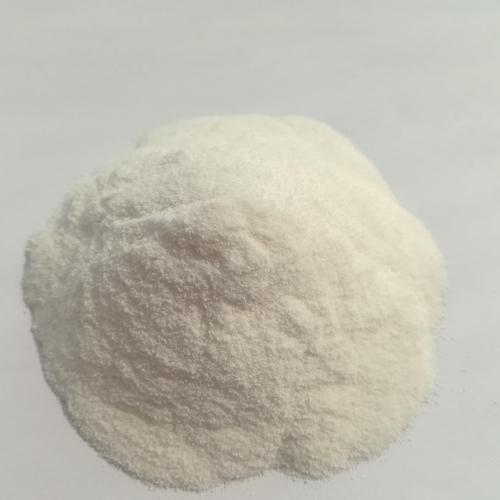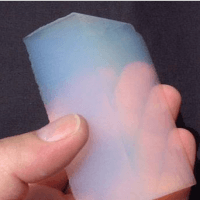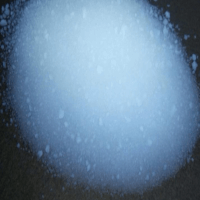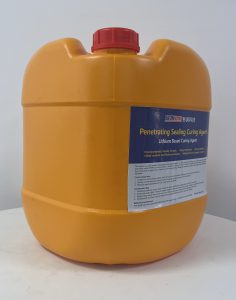Professional solutions on concrete addtives, Concrete Foaming Agent, Superplasticizer, CLC Blocks Additives, and foaming machine
Fumaric acid, chemically known as trans butenedioic acid, is a dicarboxylic acid with the molecular formula C4H4O4. Its uniqueness lies in its geometric configuration, where carboxyl groups are arranged in a trans configuration. This structural arrangement endows FA with significant thermal stability and hydrolysis resistance, making it an ideal choice for applications that require strong chemical properties.

Fumaric acid
Another key characteristic that sets fumaric acid apart is its ability to reverse water to form maleic acid. This characteristic allows for controlled conversion between two forms, which can be utilized in various chemical processes. In addition, the ability of FA to undergo esterification, amidation, and other reactions provides a multifunctional platform for the synthesis of various derivatives and polymers.
Industrial application of fumaric acid
Pharmaceutical industry: Fumaric acid plays a crucial role as a raw material and excipient in the pharmaceutical industry. It is the starting point for the synthesis of fumarate esters (FAEs), which have been widely used in the treatment of skin diseases, especially psoriasis. The anti-inflammatory and immunomodulatory properties of FAE enable it to effectively manage skin conditions without the side effects associated with traditional therapies. In addition, FA acts as a pH regulator and buffering agent in pharmaceutical formulations. By maintaining the optimal pH value, it ensures the stability and efficacy of the active ingredients. In addition, the addition of FA increases the solubility and bioavailability of poorly soluble drugs, thereby improving the therapeutic effect. This is particularly important for oral medications, as the dissolution rate directly affects absorption and effectiveness.
Food and beverage industry: In the food industry, fumaric acid is widely recognized for its dual role as a flavor enhancer and acidity regulator. Its sour taste adds depth to beverages, candy products, and dairy products, providing a refreshing and balanced flavor. Unlike citric acid or malic acid, FA does not produce a metallic aftertaste, making it the preferred seasoning application. As an acidity regulator, FA helps maintain a stable pH value throughout the entire shelf life of food. This is crucial for maintaining freshness, preventing microbial growth, and ensuring consistent quality. The noncorrosiveness of FA also means that it will not have adverse reactions with packaging materials, thereby extending product life without affecting safety.
Polymer Science and Plastics: In polymer science, fumaric acid has made significant contributions to the development of biodegradable plastics and coatings. Its ability to form crosslinks in polymer chains enhances mechanical strength and durability, thereby enabling the material to meet strict performance standards. For example, poly (fumaric acid maleic acid copolymer) has excellent barrier properties against gases and moisture, making it suitable for packaging applications. In addition, FA-based polymers can degrade under specific environmental conditions, addressing issues related to plastic waste and pollution. This is consistent with global efforts towards sustainable manufacturing practices and reducing carbon footprints. In addition, the presence of carboxyl groups in FA facilitates hydrogen bonding, which can improve adhesion performance and enhance the compatibility of polymers with various substrates.
| Parameter | Value |
| Chemical Name | Fumaric Acid |
| CAS Number | 110-16-7 |
| Molecular Formula | C4H4O4 |
| Molecular Weight | 116.07 g/mol |
| Appearance | White to slightly yellowish crystalline powder or granules |
| Odor | Odorless or with a slight characteristic odor |
| Melting Point | 287°C (decomposes) |
| Boiling Point | Sublimes without melting at higher temperatures |
| Density @ 25°C | 1.63 g/cm³ |
| pH of 1% Solution | ~2.0 (at 25°C) |
| Solubility in Water | Soluble in water (1.9 g/100 mL at 25°C), ethanol, and acetone; insoluble in ether |
| Acid Value | ≥ 700 mg KOH/g |
| Assay (Purity) | ≥ 99.0% (by weight) |
| Loss on Drying | ≤ 0.5% |
| Residue on Ignition | ≤ 0.1% |
| Storage Conditions | Store in a cool, dry place. Keep container tightly closed. Protect from moisture and direct sunlight. |
| Shelf Life | Stable for several years when stored under recommended conditions. |
Fumaric’s product parameter table
The key role of fumaric acid: The core of fumaric acid’s multifunctionality lies in its ability to affect multiple aspects of product development and performance. One of the most important contributions of FA is its role in controlling crystallization behavior. By influencing the nucleation and growth processes during solidification, FA can determine the final form of the product. This is particularly important in the creation of fine particle coatings, as precise control of crystal formation can achieve excellent surface smoothness and enhanced performance. In addition, the antioxidant properties of fumaric acid can prevent degradation caused by oxidative stress. The presence of FA can prevent the decomposition of sensitive compounds in environments exposed to air, light, or heat, thereby maintaining integrity and extending service life. This aspect is crucial in long-term storage scenarios or challenging operating conditions.
Another key advantage of fumaric acid is its ability to alter rheological properties. By adjusting viscosity and flow characteristics, FA can optimize processing parameters for various applications. For example, in the formulation of paints and coatings, FA can improve leveling and reduce sagging, resulting in more uniform and aesthetically pleasing results. Similarly, in the production of adhesives, FA can enhance viscosity and promote better adhesion.
In short, fumaric acid is a key compound in modern chemistry, driving innovation in different industries. Its unique chemical structure and multifunctionality make it indispensable for developing advanced materials and formulations that meet today’s complex application needs. The strategic utilization of fumaric acid is constantly driving advances in chemical technology, whether in the fields of pharmaceuticals, food processing, or polymer engineering.
Supplier
Cabr-Concrete is a supplier under TRUNNANO of Concrete Admixture with over 12 years of experience in nano-building energy conservation and nanotechnology development. It accepts payment via Credit Card, T/T, West Union and Paypal. TRUNNANO will ship the goods to customers overseas through FedEx, DHL, by air, or by sea. If you are looking for Fumaric acid, please feel free to contact us and send an inquiry.sales@cabr-concrete.com





